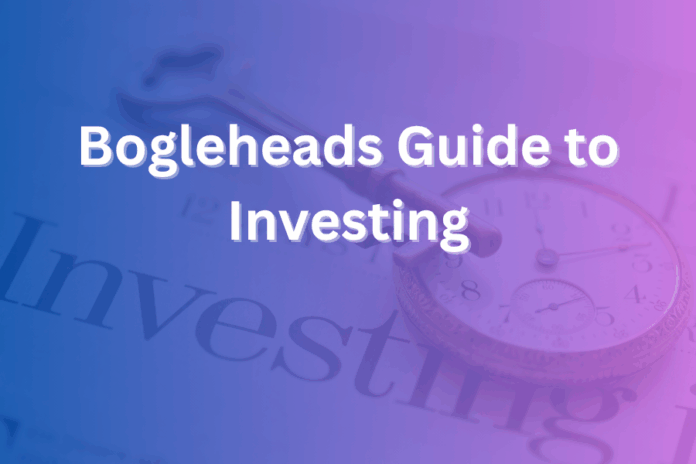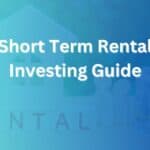Growing your wealth wisely doesn’t require a Wall Street degree or hours of stock-picking. In fact, the hallmark of the Bogleheads® investment philosophy is simplicity. Rooted in the life work of John C. Bogle and refined by a community of disciplined investors, this approach gives you a roadmap to build and preserve wealth without stress.
In this article you will learn how the Bogleheads method works, how to build your portfolio, manage risk, and stay the course for the long haul.
Why the Bogleheads Approach Works
You might assume investing needs to be complex, but the Bogleheads approach proves otherwise. At its core: invest early and often, keep fees ultra-low, diversify broadly, avoid market timing and emotional trading, and stay invested through market cycles.
Research consistently shows that high costs, frequent trades, and chasing hot funds erode your returns. By contrast, broad-market index funds—held patiently—tend to outperform. The Bogleheads principles act as guardrails so you don’t derail your long-term financial future.
Preparing to Invest: Build the Foundation
Before you pick funds or allocate assets, the groundwork matters. First, live below your means. Spending less than you earn gives you the surplus you need to invest. One Bogleheads rule: control expenses, avoid high-interest debt, and save consistently. Next, develop a workable plan.
Set goals (retirement, education, major purchase), map out your time horizon and risk tolerance, and document a basic strategy. Finally, understand risk: don’t take so much risk that you panic during a market drop, and don’t take so little that you lose out on growth. A balanced mindset and budget set the stage for investing success.
Create a Portfolio Using Index Funds
Once the foundation is set, build your portfolio with these key principles: Diversification, Simplicity, and Low Cost.
Diversify across asset classes (stocks, bonds), across geographies (U.S., global), and across market sectors. A common Bogleheads template might include a total-stock-market index fund, a total international-stock fund, and a total bond-market fund.
Keep your structure simple. You don’t need dozens of funds or exotic strategies. A “three-fund portfolio” often suffices for many investors.
Maintain ultra-low costs. Fees and expenses are silent wealth-destroyers. Choose funds with minimal expense ratios, avoid frequent trading, and steer clear of high-fee active managers.
Use index funds when possible—they track broad markets and avoid the costly guesswork of picking winners and losers. The evidence supports that in aggregate you’ll do better staying planted in low-cost index exposure.
Asset Allocation: Your Anchor in Market Storms
Asset allocation — how much you assign to stocks versus bonds — matters for both risk and returns. Younger investors tend to lean higher in stocks; those closer to retirement might shift toward bonds to reduce volatility. Stay within a range you can stick with during a downturn. Rebalancing once yearly forces you to buy low (oversold assets) and sell high (overweight assets).
Don’t time the market. The Bogleheads mantra: “Stay the course.” Markets swing — 2008 saw major drops. If you panic and sell, you lock in losses and lose the rebound. Emotion-driven decisions cost far more than fees.
Tax Efficiency and Cost Minimization
Your after-tax return is what truly matters. Key lessons: hold tax-inefficient assets (like taxable bonds or REITs) in tax-advantaged accounts (IRAs, 401(k)s); use tax-efficient index funds in taxable accounts; keep turnover low so capital gains are minimized; harvest tax losses when appropriate.
Also, keep transaction costs and time-based costs low. A 1% higher cost might sound small, but over decades it compounds into big dollar losses.
Savings Rate and The Power of Time
What you save and when you save often trump which fund you choose. For example, if you invest $500 per month starting at age 25 and continue for 40 years, you’ll likely accumulate far more than someone who starts at 35—even if the younger person picks “average” funds.
Time and compounding are your greatest allies. The Bogleheads community often suggests saving 15 %-20 % (or more) of income for retirement if you want a comfortable path.
Behavioral Discipline: Your Best Investment Tool
Markets test your instincts. That means your emotion and behavior matter more than fund performance. Stay disciplined when markets tumble. Avoid chasing last year’s winners. Don’t fall for glitzy hot funds or advertising about beating the market.
Keep your focus on your long-term plan. The Bogleheads strategy reminds you to treat investing like boring housekeeping—consistent, predictable, low-noise—because that’s where real wealth gets built.
Regular Maintenance: Review, Rebalance, Stay On Track
Once your plan is implemented, your job becomes maintenance. Review your portfolio annually — assess whether your allocations still match your risk tolerance and time horizon. Rebalance if stocks have grown too large a share or bonds too small. Keep costs low, keep investing regularly (dollar-cost averaging works), and don’t hop in and out of markets based on headlines. Over time, by maintaining discipline and adhering to your plan, you ride compounding gains instead of being knocked off course.
Key Bogleheads Rules
Here are some quick rules to keep in mind:
• Invest early and consistently.
• Choose broad-market index funds for simplicity and diversification.
• Keep expenses as low as possible.
• Avoid market timing and speculation.
• Rebalance to maintain your target allocation.
• Use tax-efficient strategies.
• Live below your means and save proactively.
Why This Approach Matters Today
Today’s investors face more choices, more marketing hype, and more noise than ever. With robo-advisors, funds, ETFs and active managers vying for attention, it’s easy to over-think. The Bogleheads approach cuts through that noise: research shows that the average actively managed fund underperforms after fees.
Meanwhile, broad index funds continue to provide market returns that beat most retail investors’ net outcomes. In a world of complexity, simplicity becomes a competitive advantage.
Getting Started: Your First Steps
Step 1: Assess your expenses and debt. Make sure you are spending less than you earn, and eliminate high interest debt (credit cards, personal loans).
Step 2: Determine your savings rate. Aim toward 15-20 % of your gross income (or adjusted for your goals and age).
Step 3: Choose your target asset allocation based on your risk tolerance and horizon. For example, you might pick 70 % stocks / 30 % bonds if you’re decades from retirement.
Step 4: Select suitable low-cost index funds (domestic total market, international total market, and total bond market).
Step 5: Open accounts (401(k), IRA, taxable brokerage) in order of tax efficiency.
Step 6: Automate your contributions (auto-transfer from paycheck or bank) so you invest without thinking.
Step 7: Resist the temptation to trade or chase performance. Keep emotions out of it.
Step 8: Once a year, review your portfolio, rebalance if needed, and adjust savings if your situation changes.
Common Mistakes and How the Bogleheads Guide Avoids Them
One common trap is chasing hot funds after they’ve performed well. The Bogleheads guide warns that markets are zero-sum: for every winner there’s a loser. You can’t reliably pick winners ahead of time. Another mistake: ignoring costs and taxes. High fees and taxes silently eat your returns. The Bogleheads method systematically addresses cost and tax efficiency. A third frequent error: trading in reaction to market noise. The guide emphasizes staying patient and maintaining your target allocation even when the market swings by 20-30 % or more.
Bottom Line
If you follow the Bogleheads guide you gain an investing plan rooted in decades of research, guided by simple rules, and proven by real-world success. You won’t need to outsmart Wall Street. Instead, you’ll adopt a plan you can stick with, through good times and bad.
From living below your means to choosing broad index funds and rebalancing annually, every step builds toward financial peace and long-term prosperity. Commit to the plan, stay consistent, and watch what time and compounding do for you.












